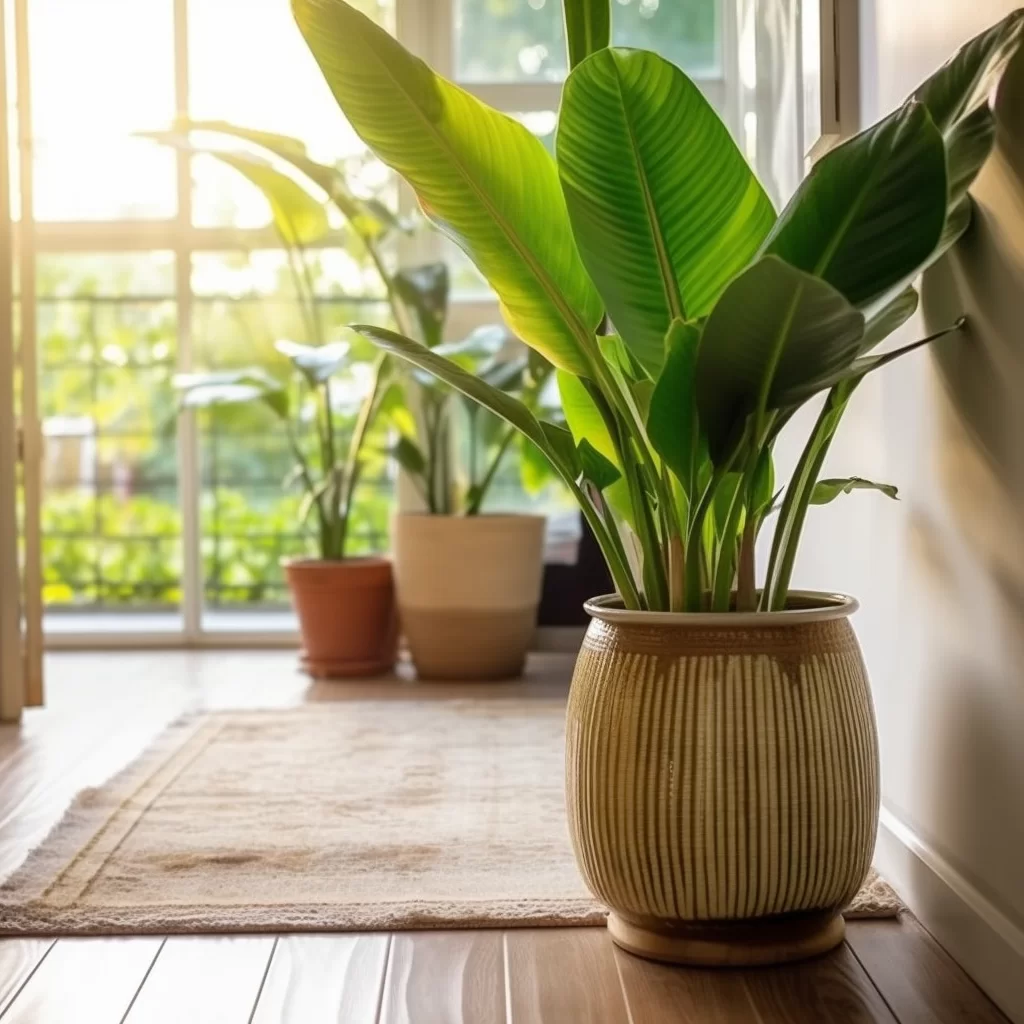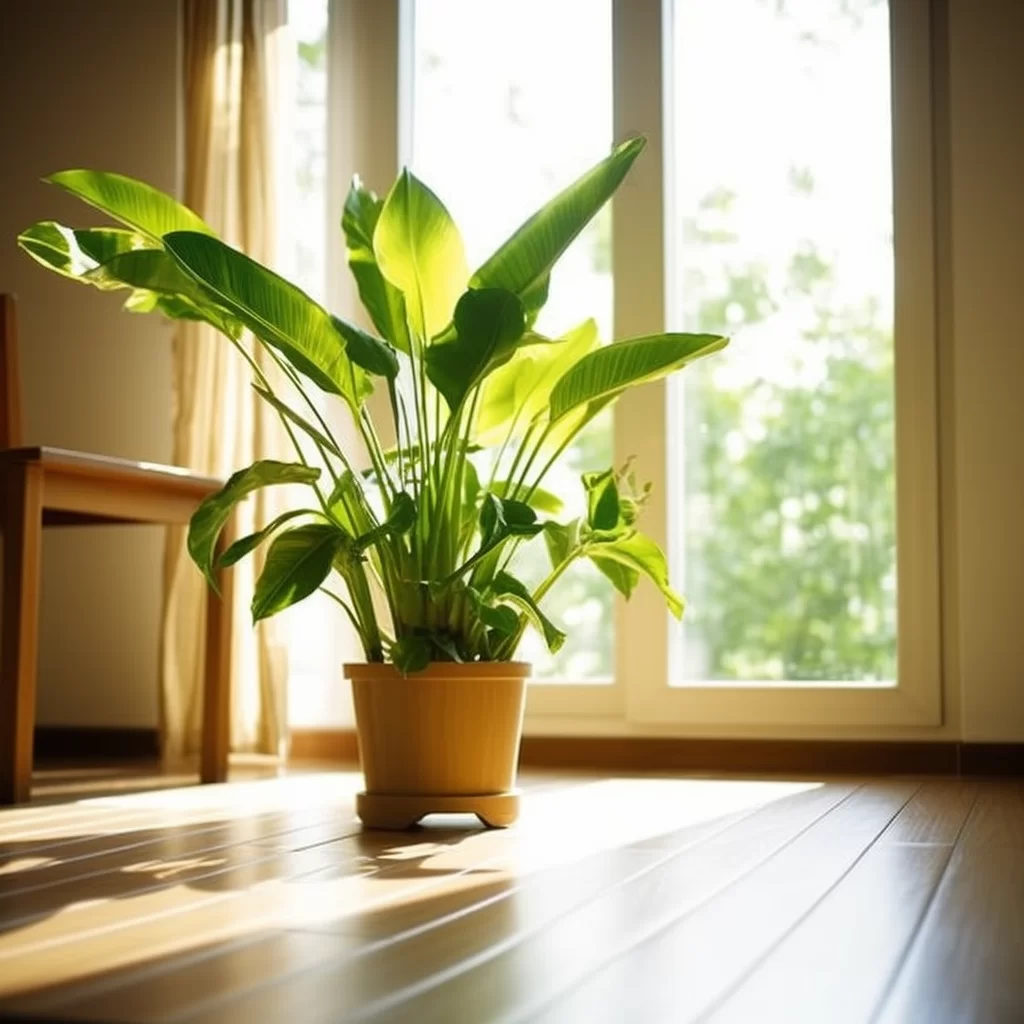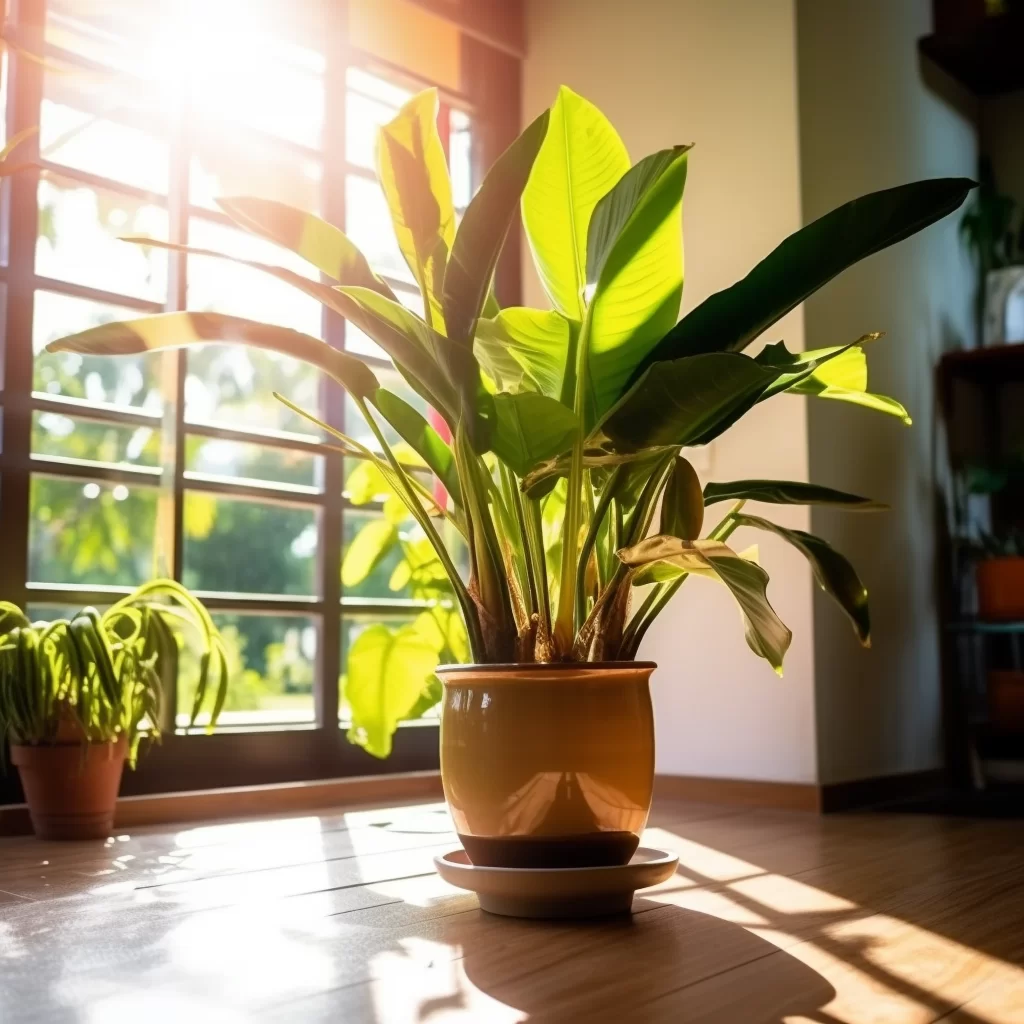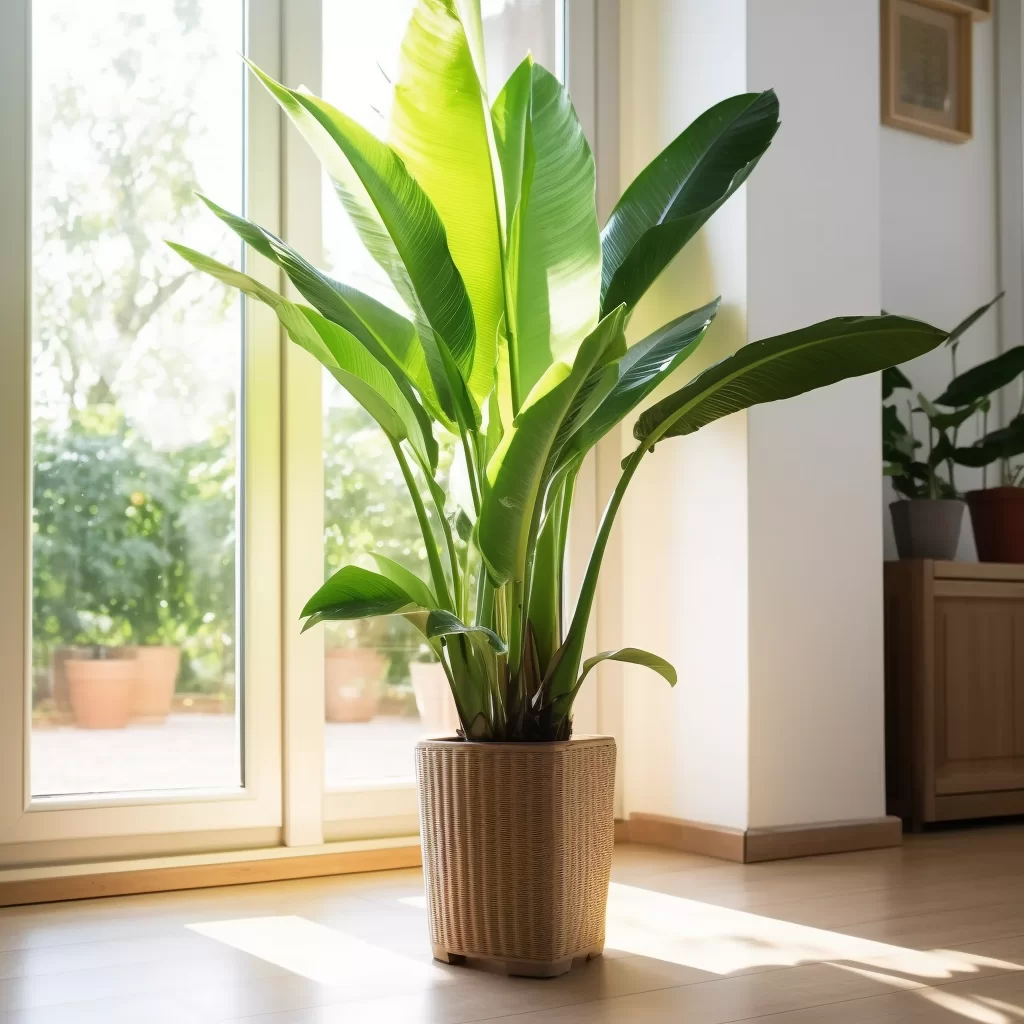Story of Day :
Contents
Indoor Banana Plant: A Complete Guide and Care Tips
Do you want to liven up your indoor space with a distinctive plant that doesn’t just look pretty but also produces tasty fruit? If so, then you should definitely consider getting an indoor banana plant.
This plant boasts gorgeous green foliage and has the ability to grow actual bananas, making it a unique and eye-catching addition to any household.
Whether you’re looking for an interesting piece of decor or simply love having fresh produce at hand, this tropical plant is sure to impress.
And don’t worry if you feel unsure about how to care for it – we’ve got all the information that you need right here.If you’re fascinated by plants that can bear delicious fruits in your own home, then the indoor banana plant is worth checking out! This intriguing tropical species comes complete with lush green leaves and impressive potential for growing bananas indoors.
Plus, its inherent uniqueness makes it a great conversation-starter no matter where it’s placed in your living space.
To help make sure that your banana plant thrives under your care, we’ll guide you through everything from watering techniques down to soil requirements in this article.
So go ahead and indulge yourself with an exceptional houseplant – one that’s both visually stunning and edible!
Choosing the Right Location
If you want to care for an indoor banana plant, choosing the right spot is crucial.
This plant loves warm and humid environments with plenty of sunshine.
So, pick a location near a south-facing window where it can bask in at least six hours of bright and indirect sunlight each day.
With sufficient light exposure, your indoor banana plant will grow healthily and produce bananas. Indoor banana plants are not only beautiful but also practical to cultivate since they bear fruit! However, for them to do so effectively, they need the perfect spot that mimics their natural habitat.
Indoor banana plants are not only beautiful but also practical to cultivate since they bear fruit! However, for them to do so effectively, they need the perfect spot that mimics their natural habitat.
This means providing them with enough warmth, humidity and sunlight as possible.
To ensure that your indoor banana plant thrives successfully, make sure you place it near a south-facing window where it can soak up six hours or more of bright and indirect sunlight daily.
By doing this you’ll be on your way to growing healthy bananas indoors!
If you’re worried about the low amount of natural light in your home, there’s no need to fret.
You can always opt for artificial lighting options such as fluorescent bulbs or LED grow lights.
These lights offer a great alternative to sunlight and are perfect for supplementing the light needs of your plants, particularly if they require a lot of light to grow and thrive.However, it’s important to keep in mind that the amount of light your banana plant receives can affect its fruit production.
If it isn’t receiving enough light, there is a possibility that it may not produce any fruit at all.
So it’s crucial to ensure that your plants are getting sufficient amounts of both natural and artificial lighting for optimal growth and yield.
With these helpful tips in mind, you’ll be well on your way to cultivating beautiful plants with ease!
Soil Requirements

If you’re planning on cultivating an indoor banana plant, it’s important to know how to choose the perfect soil.
Since these plants thrive in environments with plenty of organic matter and well-draining soil, it’s best to opt for a potting mix that contains perlite or sand.
Adding these elements not only improves drainage but also provides essential nutrients that your banana plant needs to grow healthy and strong.When selecting the right soil for your indoor banana plant, keep in mind that the quality of the soil is crucial for its growth.
It’s best to choose a well-draining mix since bananas don’t like standing water around their roots as this can lead to root rot.
Additionally, adding organic matter will help provide vital nutrients like nitrogen, phosphorus and potassium which are essential for maintaining healthy leaves and fruit production.
With proper care and attention paid towards choosing the right type of soil mixture for your indoor banana plant, you’ll be able to enjoy a thriving tropical oasis indoors!
- Avoid using heavy garden soils or those containing clay as they retain too much water which can cause root rot
- You should also ensure that there are adequate drainage holes at the bottom of your container so excess water drains out easily
- If clay pots are used then make sure they are coated on inside surface otherwise roots may get damaged over time due to mineral buildup
Watering your plants may seem like a simple task, but there are actually several techniques that can ensure their optimal growth and health.
One of the most important factors to consider is the frequency of watering.
While some plants require frequent watering, others only need it occasionally.
It is generally advised to water deeply and less often than to water shallowly more frequently as this encourages deeper root growth and prevents the buildup of excess moisture which can lead to root rot.
Additionally, it is recommended to water early in the morning or late in the afternoon when temperatures are cooler as this reduces evaporation loss and helps prevent fungal diseases. Another crucial aspect of watering techniques is proper irrigation methods.
Another crucial aspect of watering techniques is proper irrigation methods.
This can include using drip irrigation systems or soaker hoses which deliver water directly to plant roots while minimizing waste through runoff or evaporation.
Mulching around plants also helps retain moisture in soil by reducing evaporation from direct sunlight exposure while also providing nutrients for improved plant health.
Overwatering should be avoided as it leads not only to root rot but encourages weed growth too due to excess moisture availability for them too! By following these simple tips, you can effectively care for your beloved plants with proper watering techniques that will help them thrive!
Banana plants are thirsty creatures and need a lot of water to grow and flourish.
However, it’s important not to go overboard with the watering as too much moisture can actually harm them.
Overwatering can lead to root rot, which is caused by fungi that thrive in damp soil conditions.
These diseases can spread quickly and ultimately kill your banana plant if left untreated.
Therefore, it’s crucial to strike a balance between providing enough water for your banana plant without drowning it.The key to maintaining healthy banana plants is by ensuring they receive regular watering.
You should aim to keep the soil moist but not soggy; this will help promote healthy root growth and give the plant enough hydration without causing any damage or disease.
It’s also essential to pay attention to the weather conditions when determining how much water your banana plants need regularly.
During hot summer months or drier climates, you may need to adjust your watering schedule accordingly for optimal results in maintaining happy and thriving bananas!
If you have an indoor banana plant, it’s important to give it the right amount of water.
While you want the soil to be moist, over-watering can lead to waterlogged roots and potential damage.
To avoid this, aim for watering your plant once a week and keeping the soil evenly moist.
Additionally, misting the leaves is a great way to increase humidity around your banana plant.
However, make sure not to wet the leaves from above as this can lead to fungal growth and other foliage issues. Overall, taking good care of your indoor banana plant requires some attention but is well worth it in terms of having a healthy and thriving houseplant.
Overall, taking good care of your indoor banana plant requires some attention but is well worth it in terms of having a healthy and thriving houseplant.
Keep your watering schedule consistent and consider using a humidifier or misting regularly for optimal growth conditions.
By avoiding common mistakes like over-watering or wetting leaves from above, you’ll ensure that your banana plant remains disease-free and beautiful year-round!
If you’re growing banana plants, it’s important to provide them with the nutrients they need to thrive.
Fertilizing your banana plants will help promote healthy growth and fruit production.
Banana plants require a high level of potassium, as well as nitrogen and phosphorus.
Potassium helps the plant produce strong stalks and large leaves, which are essential for photosynthesis.
Nitrogen is important for overall growth and leaf production, while phosphorus supports root development.When fertilizing your banana plants, it’s best to use a balanced fertilizer specifically designed for fruit trees or tropical plants.
You can also use organic fertilizers like compost or manure to provide nutrients over time.
It’s important not to over-fertilize your bananas as this can lead to burnt leaves and stunted growth.
Instead, follow the instructions on the fertilizer package carefully or consult with a gardening expert if you’re unsure about how much fertilizer is appropriate for your specific type of banana plant.
With proper fertilization practices in place, you’ll be able to enjoy healthy bananas that are both delicious and nutritious!
If you have an indoor banana plant, then it’s essential to keep up with regular fertilization if you want it to grow strong and produce delicious fruit.
When it comes to choosing the right kind of fertilizer, opt for one that contains a balanced ratio of nitrogen, phosphorus, and potassium (NPK).
A fertilizer that has all three elements in equal amounts will give your banana plant everything it needs to thrive and produce healthy fruit.Nitrogen is crucial for leafy growth in plants, while phosphorus helps with root development.
Potassium is responsible for overall plant health by regulating water usage and preventing diseases.
By giving your indoor banana plant a balanced NPK fertilizer regularly, you can ensure that each of these vital nutrients is present in just the right amount.
This balance will promote healthy growth and ultimately lead to a bountiful harvest of delicious bananas from your homegrown tree!
If you have an indoor banana plant, it’s important to keep in mind that it will need some extra care and attention when it comes to fertilization.
During the spring and summer months, when your plant is actively growing, you’ll want to fertilize it every two weeks.
This will help provide the nutrients it needs to thrive and produce healthy leaves.
However, as winter rolls around and light levels decrease, growth will slow down, so you can reduce how often you fertilize your plant during this time.Fertilizing your indoor banana plant can make all the difference in keeping it healthy and happy throughout the year.
By following a regular schedule of feeding every two weeks during active growth periods like spring and summer, you’ll be helping your banana tree get all of the essential nutrients that it needs for optimal health.
And when winter arrives with its lower light levels causing slower growth rates for plants everywhere? Simply reduce fertilizer frequency accordingly- no harm done!
Pruning Banana Plants
To keep your indoor banana plant looking its best, you’ll need to prune it regularly.
Prune away any yellowing or damaged leaves using sharp scissors or pruning shears.
- You should also remove any suckers which grow at base of stem if you want single-stemmed tree
- If you’d like more than one stem then allow 1-3 suckers per pot depending on size
- Suckers compete with main trunk for nutrition so removing some helps maintain balance between growth & fruit production
Pest control is the process of managing and eliminating unwanted insects, rodents, or other creatures that can cause damage to crops, property or spread disease.
The most common pests include termites, ants, cockroaches, rats and mice.
Pest control techniques vary from using chemical pesticides to natural solutions like planting certain herbs that repel pests.
Pest control aims to prevent pest infestation by identifying the root cause of the problem and implementing an effective solution.Pest infestation can be a serious threat to human health as well as agricultural productivity.
Pests often carry diseases which can be transmitted through contact with humans or animals causing harmful effects on health such as allergies or respiratory problems.
In agriculture, pests can destroy crops leading to significant economic losses for farmers.
Effective pest management requires regular monitoring and proactive measures to prevent infestations before they occur.
By implementing proper pest control measures we can ensure a healthy environment for ourselves while also protecting our homes and businesses from costly damages caused by unwanted pests.
Indoor banana plants are not immune to the pesky critters that can plague houseplants.
Two of the most common pests that may take up residence on a banana plant are spider mites and mealy bugs.
These tiny insects can cause serious damage if they go unnoticed and untreated, so it is important to keep an eye out for any signs of infestation.
Look for webbing on stems or leaves as well as white fluff under leaf blades, which are indicators that these pests may be present.To keep your indoor banana plant healthy and pest-free, be sure to inspect it regularly for any signs of trouble.
If you do discover spider mites or mealy bugs, there are various methods you can use to eliminate them – from insecticidal soaps to natural remedies such as neem oil or garlic spray.
By staying vigilant and taking action at the first sign of pest activity, you can ensure that your indoor banana plant thrives in its environment without becoming overrun by unwanted guests!
When you’re a gardener, pests can present a significant challenge, but it’s not all doom and gloom.
Luckily, if you can detect the presence of pests early on in your plants’ growth cycle, you can use simple methods to control them.
One such method is to spray your plant with a solution of water and mild liquid soap.
This concoction acts as an effective insecticide by suffocating or dehydrating pests present on the plant’s foliage or stems.
For more severe infestations of bugs like spider mites or aphids, using horticultural oils like neem oil is recommended as they are more potent at killing these pesky insects.Gardeners don’t need to be specialized entomologists to deal with garden pest control effectively; some DIY solutions will do the trick! Spraying plants with water mixed with mild liquid soap is an excellent place for beginners to start because it’s natural, non-toxic and readily available in most homes.
However, if that doesn’t solve your problem effectively enough for severe infestations then using neem oils and other horticultural oils can help get rid of insects quickly without harming plants or wildlife around them! The key takeaway here is identifying the problem early before it grows out of hand because once there are too many pests in one place controlling them becomes a lot harder than preventing them from ever getting there in the first place!
In summary, the conclusion is a crucial element of any piece of writing, whether it be an essay, report or research paper.
It serves as a final statement that ties together all the key points discussed throughout the work and provides a sense of closure for the reader.
A well-crafted conclusion should leave a lasting impression on the audience and prompt them to reflect on what they have learned or gained from reading the text.
Additionally, it may offer some recommendations for further study or areas for future research.Ultimately, an effective conclusion should not only summarize but also add something new to the discussion.
This could involve presenting fresh insights or perspectives that were not previously explored in earlier sections of the work.
Moreover, it should aim to leave readers with a sense of satisfaction and understanding about what they have just read while leaving them with something thought-provoking to ponder beyond its pages.
Therefore, when crafting conclusions always keep in mind their importance in wrapping up your text powerfully yet informatively while ensuring you provide value addition and extra insights where necessary.
Indoor banana plants bring a touch of tropical paradise to any home garden.
Not only do they look visually stunning, but with proper care and attention, they can also produce delicious bananas.
The key to successfully growing an indoor banana plant is to choose a sunny spot in your home that will provide plenty of light for the plant to thrive.
Make sure the soil is well-draining and water your plant regularly, avoiding overwatering which can lead to root rot.
It’s important to keep an eye out for yellowing leaves and suckers which need pruning as needed, while also keeping pests at bay.Overall, an indoor banana plant can be a rewarding addition to your home garden as it provides not only aesthetically pleasing foliage but also fresh fruit for consumption.
With careful consideration towards its basic needs like sunlight exposure and watering regime along with vigilance against pests & diseases are essential factors that make up successful cultivation practices.
So if you’re looking for a beautiful houseplant that has benefits beyond just decoration, then try growing an indoor banana tree today!